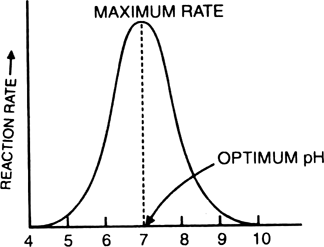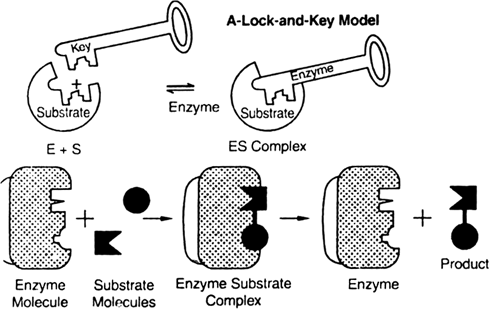1. Temperature. Enzymes work at optimum temperature. Very high or very low temperatures decreases the activity of enzymes.
Effect of temperature on enzymatic reaction

2. Effect of pH value on enzyme reaction - The enzymes are very sensitive towards any changes in the pH of the medium. A particular enzyme can react only at specific pH.
3. Effect of substrate (S) concentration on velocity of reaction- Enzyme activity increases with an increase in concentration of the substrate to a maximum and then it falls off.
4. Binding of specific chemicals - Activators enhance the activity of the enzymes whereas inhibitors decrease the activity of enzymes.

Lock and Key Hypothesis of Enzyme Action Complex
